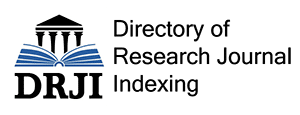The Reflection of the Anglo-American Experience of the Balance of Power in the Georgian Political-Legal Reality
The article discusses the history of the Anglo-American principle of separation of power and its practical application in the founding documents of the United States of America. Its purpose is to demonstrate the importance of the mechanism of deterrence and balancing of forces on the example of the above-mentioned country and the need to consider it in the Georgian political-social life.
Keywords: constitutional history of Georgia, founding documents of the United States of America, mechanism of deterrence and balancing, principle of separation of powers
The Chvabiani Gospels (H-1791) and the Fragment Preserved in the Mestia Museum (SMHE N 491)
The paper identifies the manuscript of the Gospels (referred to as "The Muzhali First Gospels" in the scientific literature of the second half of the 19th century and the beginning of the 20th century), whose traces were not seen among the handwritten Gospels preserved in Svaneti or taken from Svaneti. On the basis of the paleographic-codicological and textological analyses, it is proved that the manuscript called "The Muzhali First Gospels" is codex H-1791, which is preserved in Fund H of Korneli Kekelidze National Center of Manuscripts (NCM). It is also determined that one part of this manuscript (153 pages) transcribed in 1213-1216 in the savannah of the Monastery of the Black Mountain remained in Chvabiani, while another was taken to Mestia and afterwards, to Tbilisi, where it is presented in the collection of the Historical-Ethnographic Society (NCM, H-1991). As a result of the research, it was determined that the four-page fragment (SMHE N 491; K-8) preserved in the Mestia Museum under the name the Chvabiani Gospels is a part of H-1791. The paper raises the question that this fragment as well as the manuscript H-1791 should be called the Chvabiani Gospels. Both the manuscript H-1791 and the Chvabiani fragment, which is preserved in Mestia, contain 157 (not 153) pages.
Keywords: fragments kept in the Mestia Museum, manuscripts of the Gospel from Svaneti, old Georgian manuscripts, the Chvabiani Gospels
The Design in Georgia in the Context of the European Design: Comparison of the Design of Georgia with the Design Map of the Countries of Central-Eastern Europe and the Balkans
During the 20th century and the early 21st century, design was moving in its two main directions: in the international (global) direction and in the differentiated nationally oriented direction. In the conditions of this dual essence of design, the broad synchronous comparison of the phenomena of the design activity in Georgia with the similar phenomena in other regions of the world (namely, the Central-Eastern European and Balkan experience) is carried out. The identification of the development mechanisms of the nationally oriented component of the design in Georgia, including the period of its colonial state, is emphasized. The review is complemented by the comparative procedures with the nationally oriented designs of the leading countries in this field. The work highlights the priorities for the design of Georgia, which are based on the comparable practices consistent with the state of the national economy and artistic realities. The basic directions include design of fabrics, clothes and accessories; design of containers and packaging materials; design of architectural environment; landscape design of resort spaces; design bordering on applied arts or product design; design in the agricultural and special mechanical engineering, design of vehicles; the field of involvement of reinterpreted artistic forms from the deep layers of the material culture of the Georgians to the modern design practice. Therefore, choosing design efforts according to their directions is a way to succeed, to become a “trendsetter” in the given fields and to make design a brand of the country.
Keywords: design of Georgia, European design, Central-Eastern Europe, the Balkans
At the Beginnings of the Statehood in Eastern Georgia (on the Example of the Land between the rivers Iori and Alazani)
The present article discusses the archaeological monument of the Late Bronze-Adriatic Age, which is located in Ior-Alazani basin (in the Great Shiraki Valley of Eastern Georgia), where the prominent signs of the early state formation are presented.
Keywords: early statehood, Late Bronze Age, the South Caucasus
Fostering the Religious Tolerance while Teaching History in the Contemporary United States and Georgia
The purpose of the article is to demonstrate the promotion of the religious tolerance through teaching history in the United States and Georgia. The topic of the article is studied by using the comparative analysis. The issue is discussed according to the curricula and textbooks of the social studies adopted by the Ministry of Education of Georgia, as well as by the educational departments of several states. The research revealed that teaching history plays a positive role in fostering tolerance, while the cases of discrimination in both countries are caused by other reasons. As for the application of the American experience in the Georgian reality, it is possible to share the teaching methods used by the Americans.
Keywords: democracy, education, religious tolerance, teaching history, values
The Economic Interests of the USA in Georgia (the Beginning of the 20th Century)
The purpose of the research is to study the very specific episode of the Georgian-American relations. The paper studies the American economic interests in Georgia according to the official American documentation. During the research, we used the official documents of the US State Department and the travelers' records. A particular part of the mentioned documentation is unstudied and unknown to the Georgian scientific society.
Keywords: USA, Baievski, standard oil, the Black Sea, the Caucasus
The Antiquities of Mtskheta and its Surroundings in the Archival Materials of Deacon Polievktos Karbelashvili
The paper presents the unknown materials about Svetitskhoveli Cathedral preserved in the personal archive of Deacon Polievktos Karbelashvili. It seems that the learned cleric was interested in the cathedral. However, the essay dedicated to Svetitskhoveli is not in the publications, which are known nowadays.
Keywords: cultural heritage, Georgia, Mtskheta, Svetitskhoveli
The Medieval Georgian Literature and the Oriental Context
The article emphasizes the necessity of researching the medieval Georgian literature in the regional and global contexts and the need to understand it as a national writing as well as an important part of the literary processes of the world. The article discusses the main factors that should be considered while researching the relations of the medieval Georgian literature and oriental writing. Moreover, it analyses what "Eastern context" means for the Georgian secular literature and which facts should be paid attention for an adequate, excessive assessment of the Persian-Georgian literary relations.
The present research highlights the importance of the genre of the folk dāstān for the study of the Georgian secular writing and Western-Eastern literary connections. It is concluded that the Georgian verbal creativity of the Middle Ages was not only an object of the Eastern or Western influence, but sometimes it was a link between these two worlds.
Keywords: Amiran-Darejaniani, popular romance, medieval Georgian writing, Persian literature, Visramiani
The Reception of Patman's Image in Titsian Tabidze's Sonnet
The paper discusses the reception of Fatman's/Patman's image in Titsian Tabidze's sonnet "Fatman-Khatun". It depicts, what the author thought while writing the poem and what was the motivation for the creation of the sonnet. In order to better understand the text, the archetype of Patman (from “The Knight in the Panther’s Skin”) is invoked. Most importantly, it is expressed, why the poet chose this outstanding character of Rustveli as an object of depiction.
Keywords: Fatman-Khatun, Crown of Sonnets, The Knight in the Panther’s Skin, Valery Bryusov
Sulkhan-Saba Orbeliani's Unstudied Manuscript A-627 of "The Gate of Paradise"
The article is the continuation of the study of the textological problematics of Sulkhan-Saba Orbelian's dogmatic composition "The Gate of Paradise". It determines the correlation of the text presented in the manuscript A-627 with the existing editions of the composition. This text was not considered during the previous researches.
Keywords: manuscript, redaction, Sulkhan-Saba Orbeliani, textology, the Gate of Paradise.
The Representation of the Abkhazian Mystery in Galaktion Tabidze’s Poem “To the First Heads”
The paper discusses the mythological archetypes of Galaktion Tabidze's poem "To the First Heads". The research shows that the poem is based on the old Abkhazian holiday of Easter and the revival of the forces of nature. The paper analyzes the specific mythological parallels drawn between Galaktion Tabidze's poem and the Abkhazian mystery by using the comparative and structural research methods.
Keywords: Abkhazian mystery, archetypes, Galaktion Tabidze
"Lideri" and "Komanda" in the New Georgian Military Terminology
The article discusses the terminological problems that have arisen after the start of the military relations between Georgia and NATO. It deals with the difficulties that the language faces when a lot of new terms are simultaneously introduced and uncontrollably established. The article discusses two new terms.
Keywords: command, law on the state language, leader, military terms, normalization of the literary language
The Peculiarities of Establishing the Georgian Correspondences of the Ancient Greek Meteorological Terminology (on the Example of Claudius Ptolemy's Works)
The purpose of the article is to present the peculiarities of determining the Georgian equivalents of the ancient Greek meteorological terms on the example of Claudius Ptolemy's works, namely, "Tetrabiblos" or "Quadripartite", "Almagest" or "Mathematical Composition", "The Phases of the Fixed Stars" and "Geography".
Keywords: ancient Greek meteorology, astrometeorology, Ptolemy
Methods of Georgian Term Formation: On the Example of Botanical, Zoological and Anatomical Terms
The article „Methods of Georgian Term Formation: On the Example of Botanical, Zoological and Anatomical Terms“ aims to study the terminology and methods of term formation of traditional fields. This interest is determined by the fact that in the 21st century Georgian terminology is mostly filled with terms borrowed from the English language. The study of Georgian terminology in the classical period and its tradition is important today for working out the terminological policy in our country and correct implementation of terminological activities.
Keywords: Georgian term formation, traditional fields, methods of term formation.
Metaphorical conceptualization of hatred in the Georgian and English languages
As is known, the theory of conceptual metaphor gave impetus to understanding metaphor as one way of human cognition of the world from the standpoint of cognitive linguistics. According to Lakoff and Johnson's fundamental theory of conceptual metaphor (2003), metaphor facilitates human perception of the world.
It is one of the necessary tools in the differentiation and conceptualization of the world. This article aims to study the specifics of the metaphorical conceptualization of hatred in Georgian and English languages and identify and analyze universal and variant models in these languages and cultures.
Keywords: Conceptual Metaphor Theory, Georgian, English, emotion of hatred
Theophoric Names in Pre-Getic Olbia
This study aims to investigate the religious culture of the polis of Olbia from the 6th century to the 1st century BC [Pre-Getic period] through the surviving record of theophoric names used in the city. The city sat at the northernly extreme of Greek culture in antiquity and is known from the textual and archaeological material for its distinctive worship of Achilles, in addition to the traditional Olympian pantheon. The current study seeks to evaluate the onomastic data against the vast corpus of physical and literary evidence from the city to identify commonalities and discrepancies. It integrates the trends of local names within those of the wider cultural and geographic networks to which the city belonged. Several of the individual deities [Apollo, Poseidon, Achilles] evoked in the theophoric names from the site are studied in succession, while others are grouped by the overarching trends discernable in their appearance in the record of names from Olbia. Ultimately, this paper serves to demonstrate the limitations of the exclusively onomastic investigation, particularly pertaining to the Olympian pantheon, while also highlighting some ways in which these data can supplement the understanding of the role of more minor deities in Ancient Greek urban religious communities, such as hero cults.
Keywords: ancient Greek Religion, Olbia, onomastics, prosopography, the 6th-1st centuries BC
The Structural and Lexical-Semantic Groups of the Terms Denoting Colours in the Georgian Symbolists’ Works
The present article discusses the words denoting colours presented in the works of "Tsisperkantselebi". We will find out the symbolic meaning of the vocabulary related to colours in the poetry of "Tsisperkantselebi" (how often the mentioned vocabulary is used and which is the dominant colour). We will analyse the importance of the theories of Frumkina, Vezhbitska, Kandinsky, Berlin and Kay in relation to this specific field of vocabulary. The semiotic opinions of other linguists will also be discussed.
We start the study of the issue by separating the basic colours. However, the research is not limited to the main colours.
The work is created in accordance to the principles of the Kartvelian linguistics, for which the main things are interdisciplinary studies and drawing appropriate conclusions against the background of data from adjacent specialties. We distinguish two dimensions of the mentioned approach: linguistics-literature studies and culturology, because linguoculturology implies the interconnection of linguistic and cultural studies.
Keywords: Georgian symbolism, symbol, terms denoting colours
The Issues of Transliteration of the Biblical Names of Abraham and Sarah into Georgian
In the Book of Genesis, the Lord promises Abram that he will become the father of numerous descendants. As a sign of this great mission, he changes the names of both Abram and his wife, Sarai [Gen. 17:5, 15]. This article aims to show in what form (Greek or non-Greek, taking into account the oriental literary-textual tradition) the original and modified names of Abraham and Sarah were transliterated into Georgian by the old translators-editors. The issue is explored taking into account all possible foreign language sources. Depending on the volume of the article, it is published in two parts: in the first part, the issue of rendering of the above-mentioned proper names in the books of the Old Testament is discussed, and in the second part – the same issue in the New Testament, lectionaries, as well as in other written sources of old and middle Georgian and the translations made into the new Georgian language.
Keywords: transliteration of proper names, Abraham, Sarah, biblical translations.
The Perception of Allen Ginsberg's Poetry in the Georgian Literature (On the Example of Shota Iatashvili’s Translation of the Poem
The article presents the analysis of the poem "Howl" by Allen Ginsberg - a poet of the Beat Generation. The poem consists of three parts. In the first part, the poet speaks about the best thinkers of his generation, who were destroyed by madness. In the second part, a reader learns that the destruction of people is Moloch's fault. In the third part, the poet directly addresses Carl Solomon, his friend, to whom he dedicated the poem and sympathizes with him due to his stay in psychiatric hospital and difficult days spent there. The article also discusses the main themes of the poem. "Howl" was translated into Georgian by Shota Iatashvili. The last part of the article presents the comparative analysis of the original and its Georgian translation.
Keywords: Ginsberg, howl, Iatashvili, translation
The Problem of the Authorship of De Sectis and the Old Georgian Translation of the Treatise Presented in “Dogmatikon” of Arsen Vachesdze
The article discusses the issue of authorship of the treatise "Scholia of Theodore, the most pious Abba and the wisest philosopher, which philosophizes as necessary on both holy and foreign writings” presented in "Dogmatikon" by Arsen Vachesdze. This work is known in the Western scientific literature as De Sectis.













